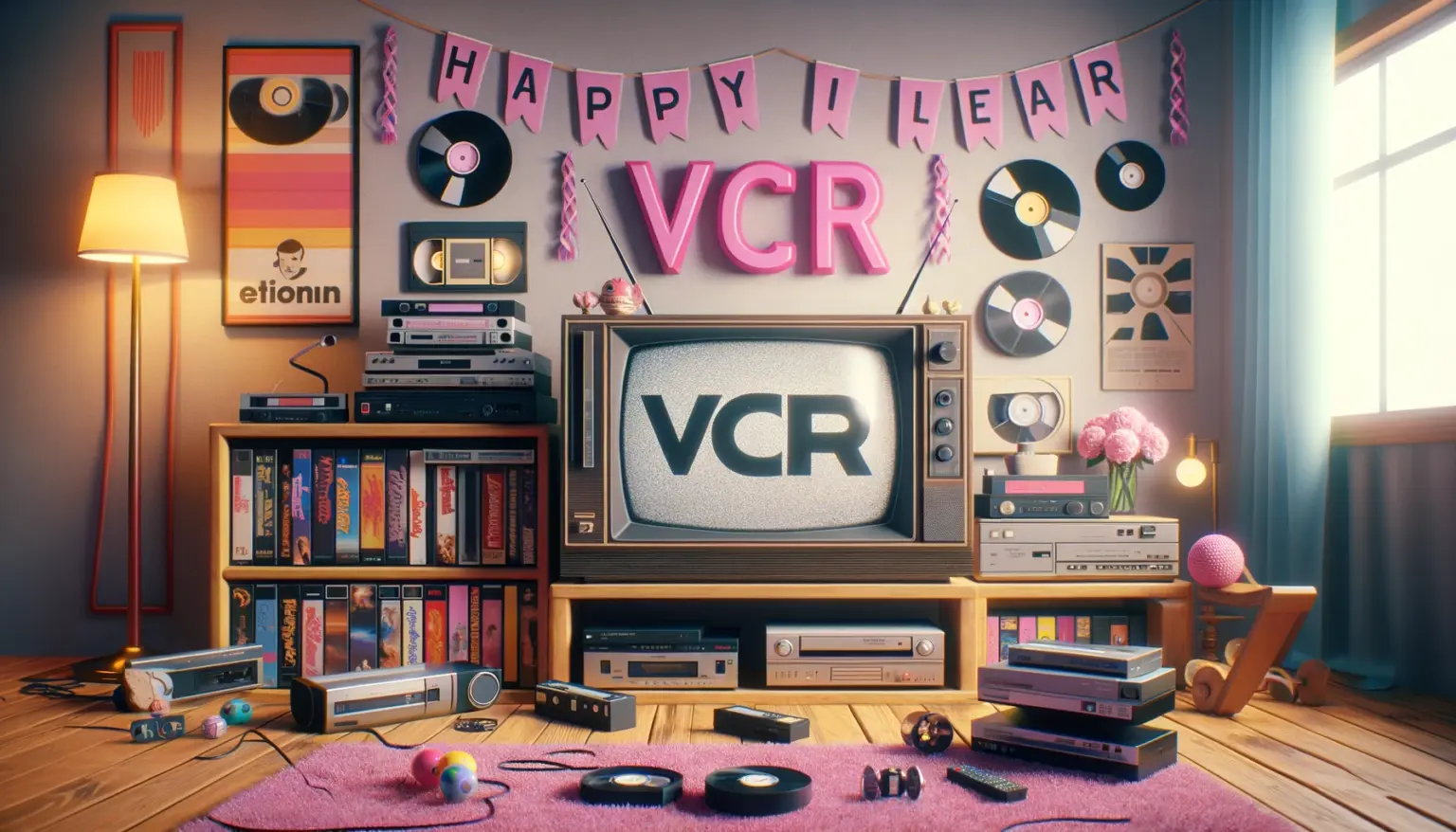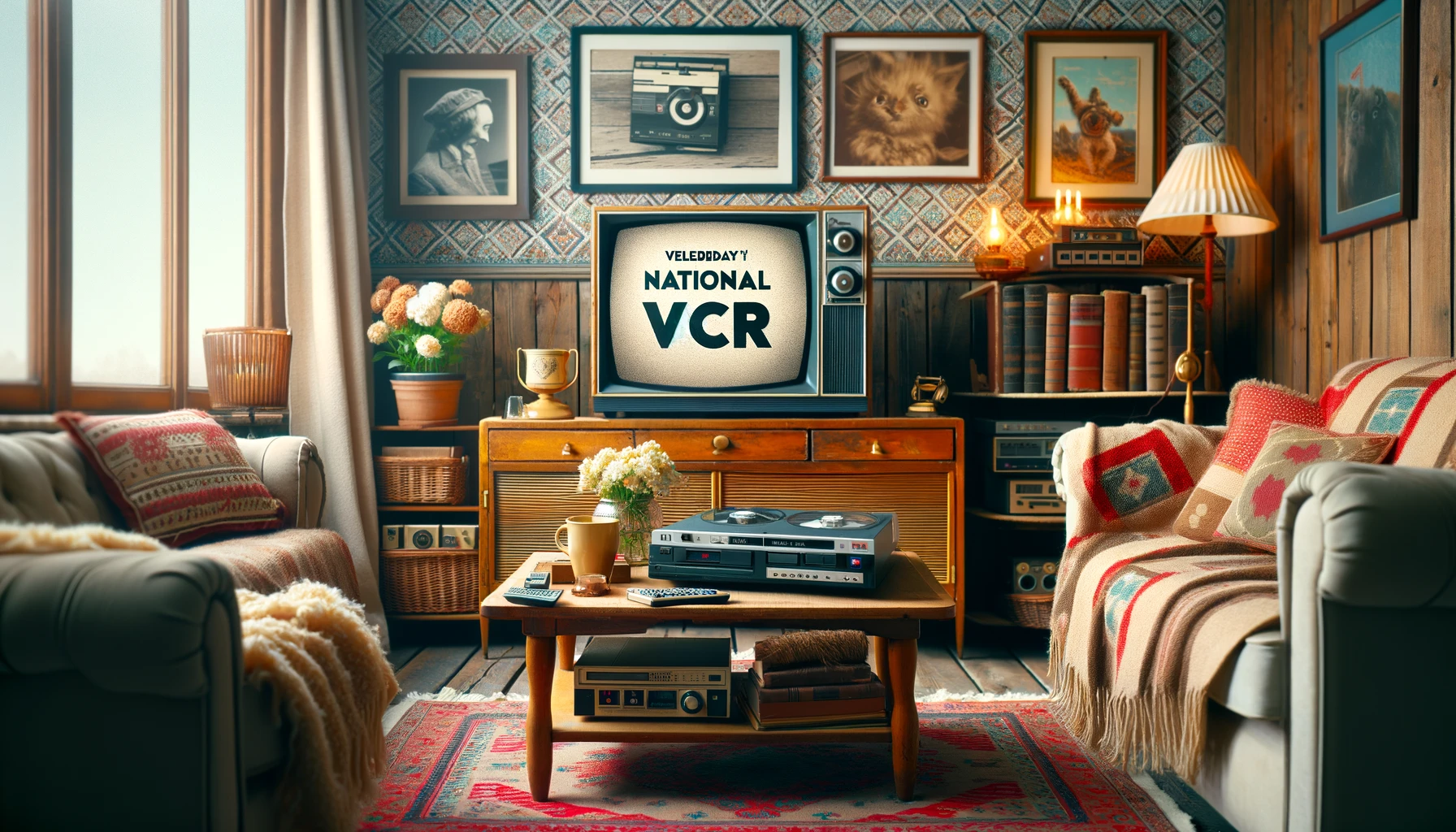When I think about the birth of the VCR, it feels like stepping back into a world where innovation was just beginning to touch our everyday lives. The invention of the VCR in the late 1950s marked a revolutionary step in home entertainment. Created by Ampex, the first commercially successful VCR was the VRX-1000, a massive machine that seemed almost magical at the time. It wasn’t just a gadget; it was a gateway to endless possibilities, bringing the magic of cinema and television directly into our living rooms.
Key figures like Charles Ginsburg, who led the Ampex research team, played a pivotal role in this technological marvel. The early VCRs were expensive and primarily used by television stations, but as the technology evolved, it became more accessible to the average consumer. By the late 1970s, with the introduction of the Betamax by Sony and the VHS by JVC, the VCR had firmly planted its roots in households worldwide. This era saw a boom in technological advancements, from the development of more compact and user-friendly models to the integration of timers for recording shows.
The VCR Boom: Transforming Home Entertainment
The 1980s and 1990s were the golden years for the VCR. This period saw the VCR transform from a luxury item to a household staple, changing how we consumed media. It was a time when families would gather around the TV, a freshly rented VHS tape from the local video store in hand, ready for an evening of shared entertainment. The video rental industry exploded, with stores like Blockbuster becoming cultural landmarks in their own right. Renting a movie became a ritual, an event that brought excitement and anticipation.
Culturally, the VCR had a profound impact. It democratized access to movies and TV shows, allowing people to watch their favorite content on their own schedules. This freedom was previously unimaginable and set the stage for the on-demand culture we take for granted today. Economically, the VCR spurred growth in the media industry, creating new markets for home video sales and rentals. The ability to record TV shows also meant that people could engage with media more flexibly, leading to a more personalized viewing experience.
Personal Stories and Memories: A Walk Down Memory Lane
When I reminisce about my own experiences with the VCR, a flood of warm memories comes rushing back. I remember the joy of browsing the shelves of our local video store, the thrill of choosing the perfect movie for a Friday night, and the simple pleasure of pressing play on the VCR. These memories are shared by many, each with their own unique stories. For instance, my friend Lisa recalls recording her favorite cartoons to watch on Saturday mornings, while my cousin Tom fondly remembers the excitement of discovering hidden gems among the rental tapes.
These personal anecdotes highlight the deep emotional connection many of us have with the VCR. It wasn’t just a machine; it was a part of our lives, woven into the fabric of our daily routines and special occasions. Whether it was recording a live concert, capturing a favorite TV series, or simply watching a beloved movie again and again, the VCR was a tool that brought joy and convenience. It’s these shared experiences that make National VCR Day so special, as it allows us to collectively celebrate and remember a technology that shaped our formative years.
The Decline of the VCR: The End of an Era
As with all great technologies, the VCR’s reign eventually came to an end. The turn of the millennium brought with it rapid advancements in digital technology, and the VCR began to fade into obsolescence. The introduction of the DVD in the late 1990s was a significant turning point. DVDs offered superior picture and sound quality, more storage capacity, and additional features like scene selection and bonus content, which quickly made VHS tapes seem outdated.
The rise of streaming services in the early 2000s further sealed the VCR’s fate. Platforms like Netflix and Hulu provided instant access to a vast library of content, eliminating the need for physical media altogether. By the mid-2000s, the once ubiquitous VCR had become a relic, and video rental stores started to disappear. It was the end of an era, but the legacy of the VCR lived on, paving the way for the digital revolution that transformed how we consume media today.
The Legacy of the VCR: Lasting Impact on Modern Entertainment
Despite its decline, the VCR’s impact on modern entertainment is undeniable. It was the precursor to many of the technologies we now take for granted. The concept of recording and replaying video content, pioneered by the VCR, laid the foundation for DVRs, streaming services, and even on-demand television. The VCR introduced us to the idea of having control over our viewing schedules, a concept that has only expanded with the advent of digital media.
Collectibility and nostalgia also play a significant role in the VCR’s enduring legacy. VHS tapes and VCRs have become cherished collectibles for many enthusiasts. There’s something inherently nostalgic about these objects, a tangible connection to a simpler time when movie nights involved physical tapes and manual rewinding. Collectors and retro enthusiasts celebrate the VCR not just as a piece of technology, but as a cultural artifact that holds a special place in our hearts.
Conclusion: Celebrating National VCR Day
As we celebrate National VCR Day, it’s essential to remember and honor the VCR’s contributions to our lives. The VCR wasn’t just a technological advancement; it was a catalyst for change, transforming how we interacted with media and each other. It brought families together, created new industries, and left a lasting imprint on our cultural landscape.
Reflecting on these memories and the VCR’s legacy, we can appreciate how far we’ve come in the world of home entertainment. So, let’s take a moment to dust off those old VHS tapes, share our favorite VCR stories, and celebrate the day with a nod to a device that revolutionized our viewing habits. Happy National VCR Day!
10 Interesting Facts
- The first commercially successful VCR, the Ampex VRX-1000, was introduced in 1956 and cost around $50,000.
- VHS stands for Video Home System, a format developed by JVC.
- The famous “format war” between Betamax and VHS in the late 1970s and early 1980s was ultimately won by VHS due to its longer recording time.
- The first VHS movie ever released was “The Young Teacher” in 1976 in Korea.
- By 1987, 90% of households in the United States owned at least one VCR.
- Video rental stores, like Blockbuster, became cultural icons during the 1980s and 1990s, with Blockbuster peaking at over 9,000 stores worldwide.
- The last major Hollywood movie released on VHS was “A History of Violence” in 2006.
- Some VCRs had a feature called “VHS Hi-Fi,” which provided significantly better audio quality than standard VHS.
- The longest commercial VHS tape could hold up to six hours of video.
- Despite their decline, VCRs and VHS tapes have become collectibles, with some rare tapes fetching high prices among enthusiasts.
As someone who grew up during the VCR era, I believe the VCR was more than just a piece of technology; it was a cultural phenomenon that brought people together and made home entertainment accessible to all. The joy of renting a movie, recording a favorite TV show, or sharing memories with loved ones through home videos is something that modern technology, despite its many advancements, can never fully replicate. National VCR Day is a wonderful opportunity to celebrate this incredible device and the timeless memories it created.
#VCR #NationalVCRDay #VHS #HomeEntertainment #Nostalgia #MovieRentals #TechnologyHistory #1980s #1990s #Retro












Celebrating National VCR Day with a nostalgic journey through time. A delightful read!
VCR day celebration
Great guide!
Celebrating National VCR Day is so nostalgic. This article brings back fond memories of VCRs and tapes.
National VCR Day is a nostalgic celebration. This article captures the significance and history of VCRs well. Well written!